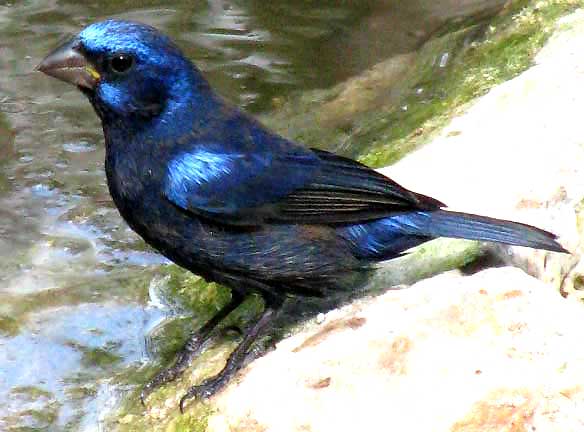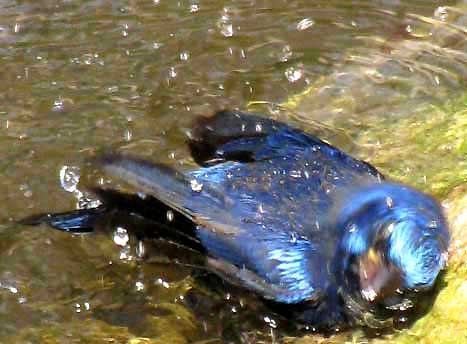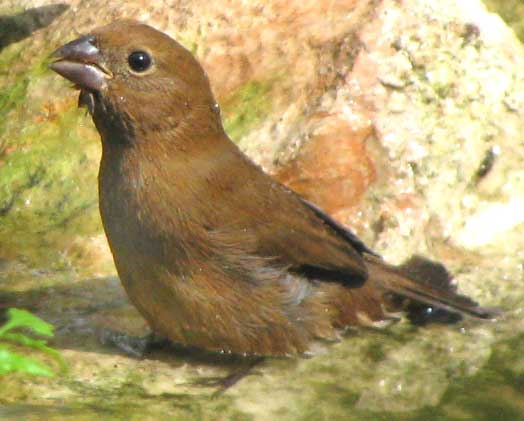Excerpts from Jim Conrad's
Naturalist Newsletter

from the January 9, 2011 Newsletter issued from Hacienda Chichen Resort beside Chichén Itzá Ruins, central Yucatán, MÉXICO; limestone bedrock, elevation ~39m (~128ft), ~N20.676°, ~W88.569°
BLUE BUNTING BATHING
As the dry season cracks down, more and more critters visit the little black-plastic-trough birdbath beside the hut. Between the hut's wall poles I can photograph without being seen. Maybe this week's best bird shot is the one at the top of this page.
That's the non-migrating Blue Bunting, distributed from Mexico to northern Nicaragua. A male is shown, the female being a warm brown overall. I know when this bird arrives because upon landing in nearby bushes where the open birdbath area can be surveyed for dangers he issues a sharp, metallic CHICK! CHICK! CHICK!
The first pictures of a male Blue Bunting I saw suggested that the birds were basically black with pale, blue patches caused by iridescence. I thought that the patches might vary in intensity depending on the light. This photograph makes clear, though, that the pale blue spots are caused by permanently pale blue feathers.
Now take a look at this same bird bathing, below:

An interesting point is that my shutter speed for this shot was set at 1/2000th of a second, which is fairly fast. If the swinging head is so blurred in the picture at that shutter speed it can only mean that the head was oscillating very fast.
from the January 23, 2011 Newsletter issued from Hacienda Chichen Resort beside Chichén Itzá Ruins, central Yucatán, MÉXICO; limestone bedrock, elevation ~39m (~128ft), ~N20.676°, ~W88.569°
FEMALE BLUE BUNTING
The other day we looked a male Blue Bunting bathing. This week I got a nice picture of female, surprisingly handsome in her rich brownness, as shown below:
